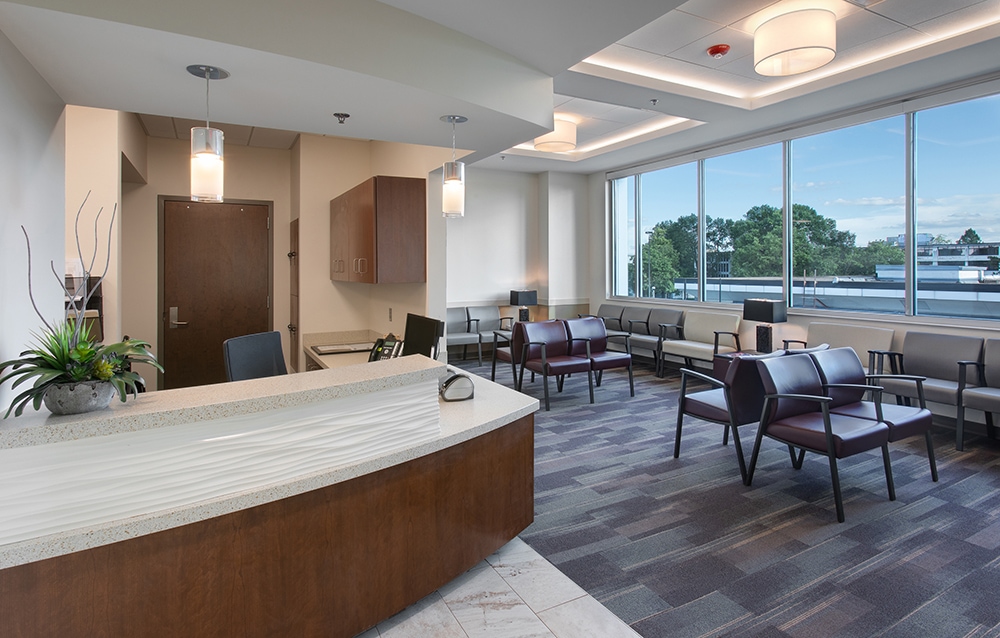Bill and Lucille Magers Family Health and Wellness Center Interior Design
The Bill and Lucille Magers Family Health and Wellness Center is a medical home for the Missouri State University students, faculty and staff, offering clinical appointments, urgent care services, a treatment clinic, mental health services, a pharmacy and wellness programs. The existing building was originally constructed in 1969 for a student body of 8,600 students. Currently, the university has over 20,000 students on campus. With patient rooms booked at more than 97% occupancy every day, the facility simply could not keep up with demands.
Hastings+Chivetta Architects worked with the university to evaluate options for renovation versus new construction.
On-site design workshops involving students, health center staff, administration and maintenance staff were held. The team determined the need for a new facility and then prescribed a strategy for implementing recommended solutions.
The the new Health and Wellness Center doubles the space available for health care and wellness teaching, provides increased comfort and privacy for patients, and features a convenient drive-through pharmacy. Also incorporated is consultant space for clinics, such as dermatology, gynecology, orthopedics, dietetics and psychiatry, among others. The center also houses the Student Counseling Center and a Women’s Health Center. The Lab offers illness testing for students, while the Travel Clinic provides preventative medical care to international travelers. The facility serves the campus as a “one stop shop” for health, research and lifestyle management.
Design efforts emphasize achievement of an energy efficient facility with particular concern for natural day lighting, sensors for reductions in lighting use and water use reduction. Indoor air quality includes attention to ventilation opportunities and the specification of low emitting materials. Natural light is encouraged in as many areas and to as great an extent as possible. The center has an open and integrated feeling which is supportive of the integration of its health programs. The facility also emphasizes consumer accessibility to health resources through openness of spaces.




